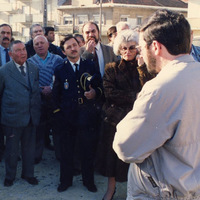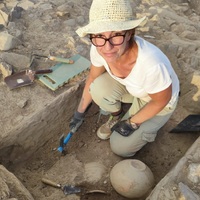
Luis Barros
Related Authors
Ernst Pernicka
Universität Heidelberg
Martin Oliver
UCL Institute of Education
Philipp Wolfgang Stockhammer
Ludwig-Maximilians-Universität München
Marta Diaz-Guardamino
Durham University
Manuel Fernández-Götz
University of Oxford
Miljana Radivojević
University College London
Julian Thomas
The University of Manchester
Maria Nilsson
Lund University
Enrico Cirelli
Università di Bologna
Katharina Rebay-Salisbury
University of Vienna
InterestsView All (33)










Uploads
Papers by Luis Barros
dogs for a long time, sometimes they treat other animals
in similar ways, but not so often as dogs. That’s because
human and dogs have a unique relationship, which is
1 Universidade do Algarve
NAP – Núcleo de Arqueologia e Paleoecologia
*franciscomrcorreia@gmail.com
demonstrated by the number of breeds that exist today
and the important role that dogs have in human society.
The archaeological records show us that this relationship
began long ago, when groups of hunter-gatherers
domesticated the wolf (around 15.000 years ago).
During the excavation carried out in the 90s in Quinta do
Almaraz (by the Tagus River, in the municipality of
Almada) several dog burials were found, dating from the
8th century B.C., when the Iron Age Phoenician
occupation took place. Several skeletons of dog are
practically completed, suggesting that these animals have
unique histories and acknowledging them as distinct
“beings with soul”. These mortuary rites can only be
compared to those of their human counterparts. Four of
the burials have a minimum of two dogs, suggesting the
possibility that maybe we are present with four cases of
double burial. Of the entire collection only two
individuals (CF13 and CF14) were buried in the same
context. In this case, the fact that they are two individuals
of partial skeletons in same square at the same layer, and
the fact that both dogs have the same age suggests the
possibility of a double burial.
By analyzing the bones, we have determinate that the
collection contain a total of 1413 (NTR) fauna remains,
but only 957 belong to canis familiaris, corresponding to
a minimum of 13 individuals (MNI). According to the
pathologies and archaeological remains, they had various
functions in Phoenician society. During the analysis we
came across a clear absence of skulls, complete and/or
partial. We found that there were no signs of cutting in
the bones connected with the skull. This leaves to the
conclusion that skulls had been removed when there
weren’t soft tissue (e.g. when the dog was in the
skeletonization stage), revealing that there may have been
a ritual during the burial and removal of skulls.
Osteological studies of dogs often focus on issues of
taxonomy and as a result little is known about these
animals’ life histories. This work will be focus on
analyzing the dogs’ remains, and their associated fauna
remains. Based on this analysis with the correlation of the
data uncover by analyzing the pathology, discovered in
some dog bones, we suggested that this dogs were more
than companion and guard dogs, in fact they maybe have
had a more important role in the Phoenician society. We
think that these dogs may have help humans in hunting,
pastoralism, and even maybe in fishing.
Keywords: Dog Burials; Iron Age; Phoenician; Quinta
do Almaraz